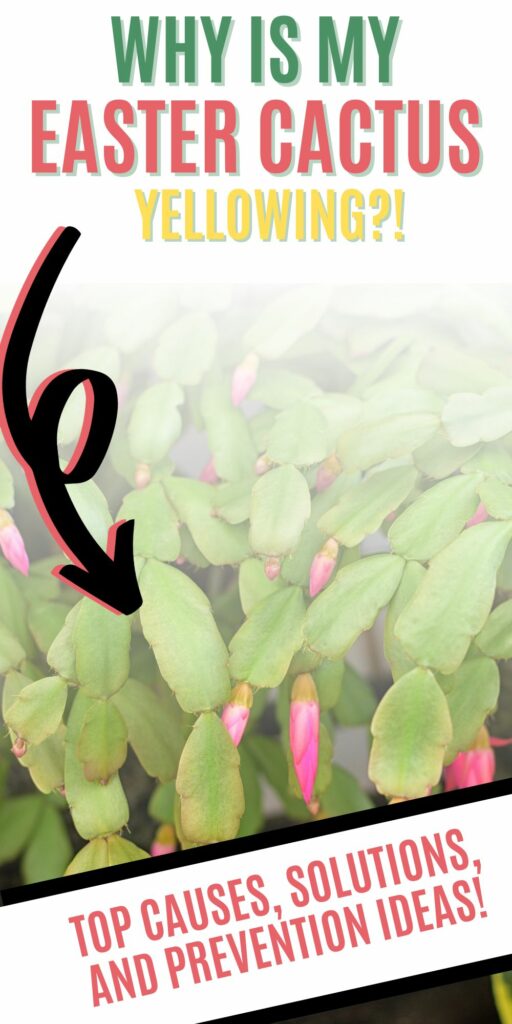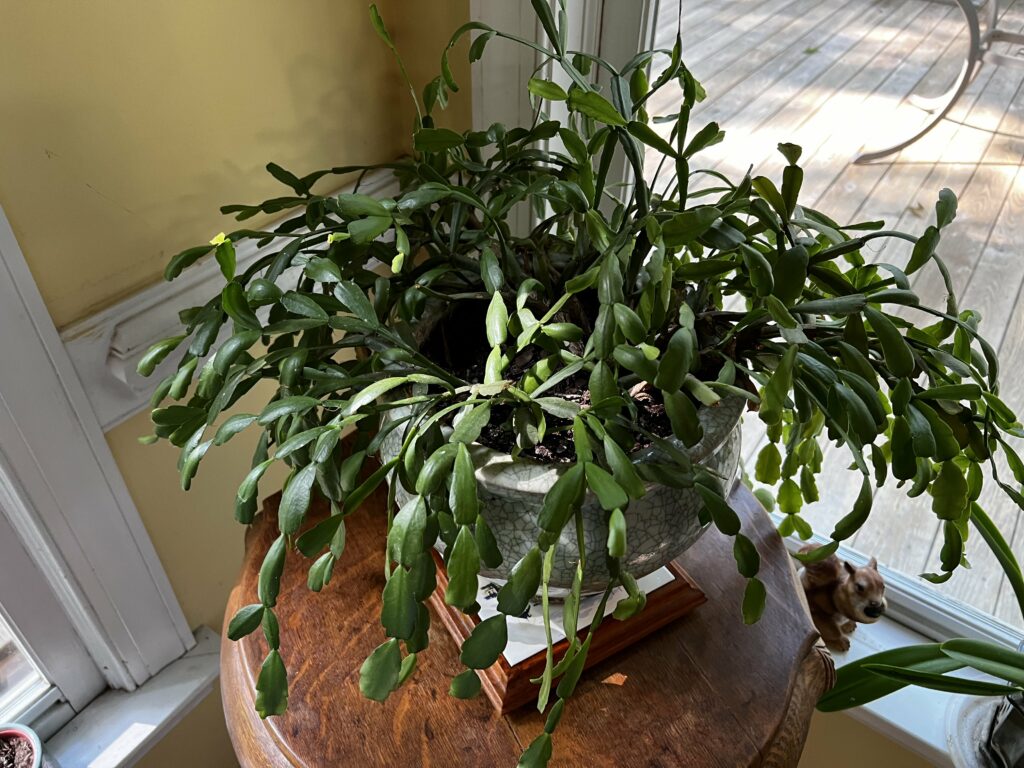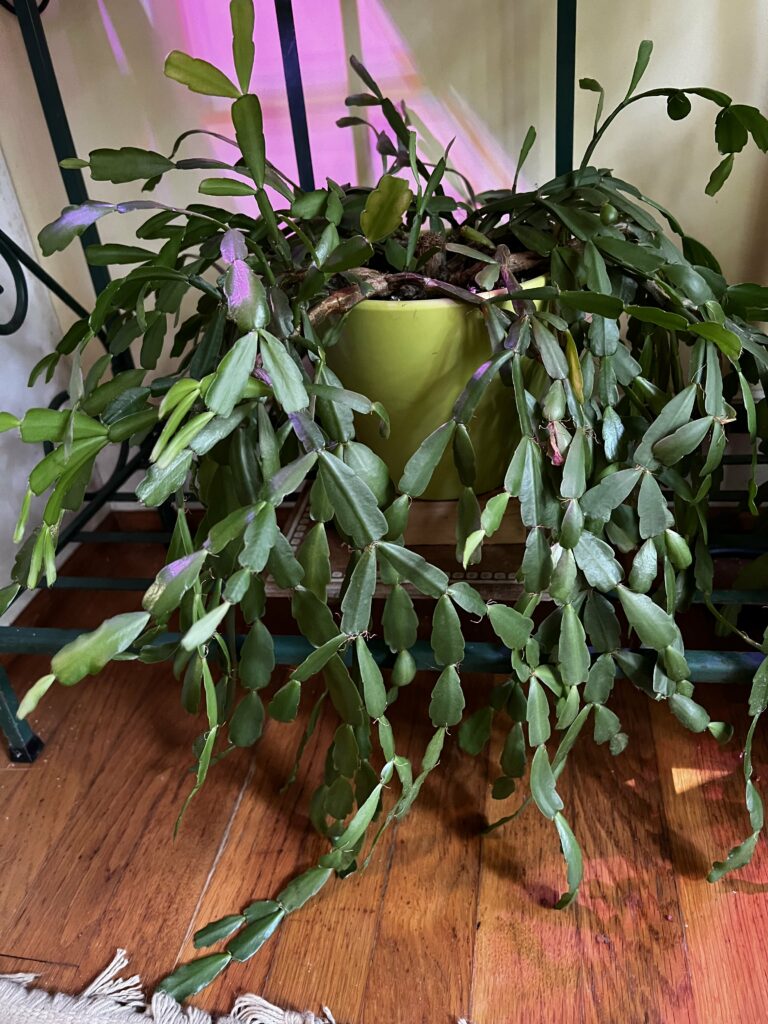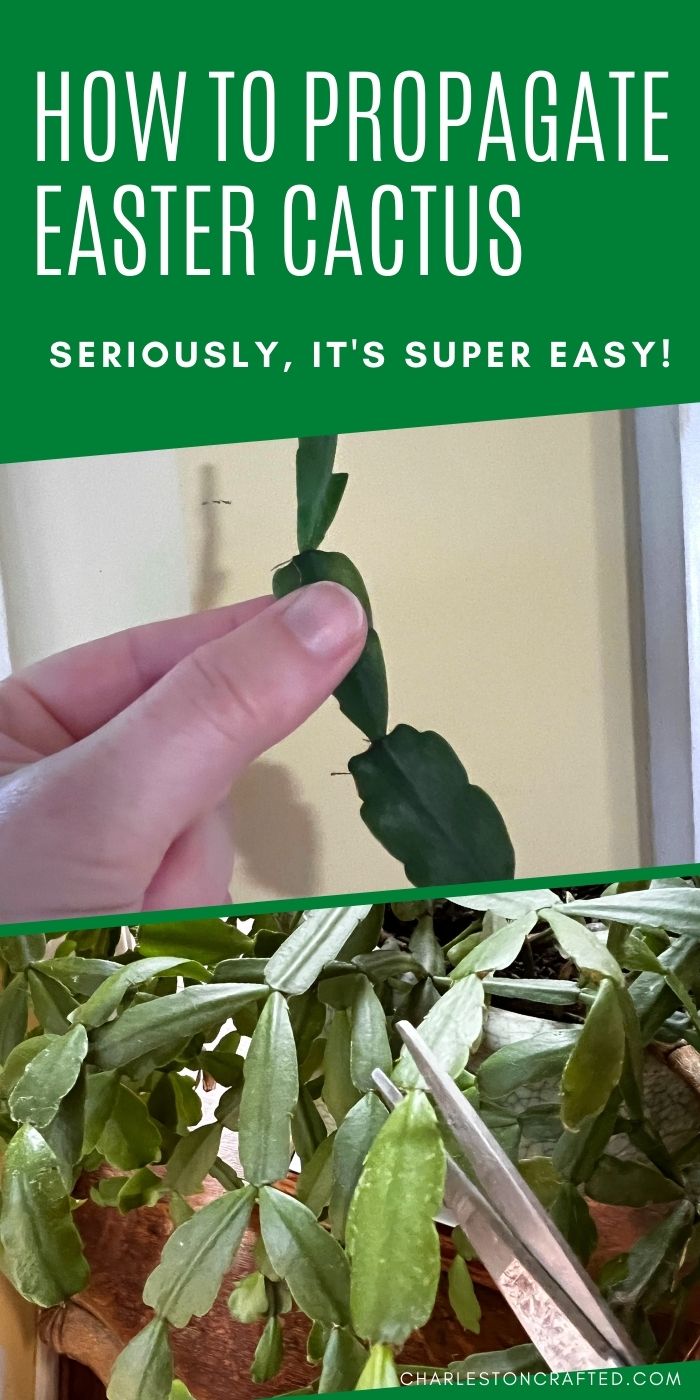Are you having trouble with your holiday cactus? Here are the top causes of Easter cactus yellowing, how to fix it, and how to prevent it!
The Easter cactus, scientifically known as Hatiora gaertneri, is a delightful house plant that shares its tropical roots with the Christmas and Thanksgiving cacti.
Originating from the rainforests of Brazil, Easter cacti thrive in highly humid environments beneath the rainforest canopy.
Recognizable by their flat green stems, or cladodes, Easter cacti are loved for their lovely flower buds that adorn the tips of their stems in various vibrant colors, including pink, red, white, and purple.
You can't go to a grocery store or garden center around Easter time without being tricked into buying one of these gorgeous fully blooming plants!
Easter cacti, much like their holiday cactus relatives, are generally low-maintenance houseplants that appreciate consistent care and attention.
However, if you notice your Easter cactus turning yellow, it's natural to be concerned.
As a plant parent, you may not immediately know the cause or what to do, but rest assured that in most cases, this issue is reversible and won't be fatal for your beloved plant.

Why is my Easter cactus yellowing?
Here are some of the reasons that may cause yellowing leaves and problems with your Easter cactus:
1. Inappropriate Sunlight Exposure
Just like Christmas and Thanksgiving cacti, Easter cacti require bright, indirect light.
Exposure to direct sunlight can cause leaf yellowing, and can burn their stems and leaves.
Ensure your Easter cactus is placed in an area with bright, filtered light. Ideal locations include north-facing or west-facing windows to prevent excessive sun exposure.
2. Underwatering
Contrary to popular belief, Easter cacti, like their holiday cactus relatives, thrive in a more humid environment.
Yellowing leaves may indicate inadequate moisture.
Maintain soil moisture by watering your plant when the top inch of the soil feels dry to the touch, ensuring it remains consistently moist without being waterlogged.

3. Overwatering
Overwatering can lead to root rot, a potentially life-threatening issue for your Easter cactus.
Avoid a strict watering schedule; instead, regularly check the soil's moisture level and water when the top 2 inches feel dry to the touch.
Ensure your plant is in a pot with adequate drainage holes and well-draining soil.
4. Lacking Nutrients
To prevent yellowing due to nutrient deficiencies, consider repotting your Easter cactus with fresh soil mix upon acquisition.
Nitrogen deficiency can result in yellowing leaves. Feed your plant with a high-quality liquid fertilizer or slow-release fertilizer, following package instructions during the active growing season.
Some suggest that Easter cacti may benefit from magnesium; if so, you can dilute one teaspoon of Epsom salt in one gallon of water and feed it once a month in spring and summer.

5. Drainage Issues
Proper drainage is crucial for Easter cacti. Choose a pot with plenty of drainage holes to allow excess moisture to escape and prevent yellowing.
6. Pests and Diseases
Vigilantly inspect your plant for signs of disease or pests.
Overly moist soil in an unsuitable pot can attract these issues. Promptly address any problems by isolating the affected plant and exploring remedies tailored to the specific concern.
We hope this article helps you identify the causes of your Easter cactus yellowing and provides solutions to address the issue effectively!
Thanks for reading!


Hey there, I'm Morgan, a houseplant enthusiast from sunny Charleston, South Carolina. Growing up surrounded by my mom's lush orchids and African violets, I discovered the magic of bringing nature indoors. Thanks to the pandemic, I delved deeper into houseplants, discovering their power to uplift moods and transform spaces. I'm here to spill all my secrets, helping you pick the perfect houseplant - and make it happy. Let's keep your plants alive, together! 😊



